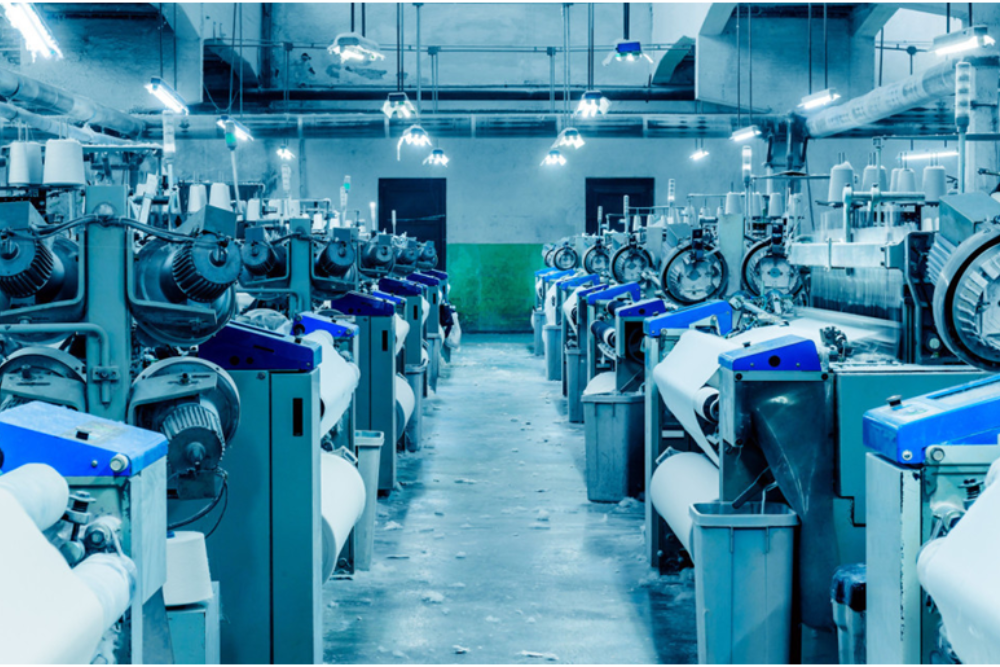Introduction
Textile technology encompasses the methods, machinery, and innovations involved in the production, processing, and application of fibers and fabrics. This field integrates principles from materials science, engineering, and design to create textiles that meet diverse functional and aesthetic needs. From traditional weaving to cutting-edge smart fabrics, textile technology plays a pivotal role in various industries, including fashion, healthcare, automotive, and construction.
- Fundamental Processes in Textile Manufacturing
The journey of textile production involves several key stages:
- Fiber Production: Fibers are the fundamental building blocks of textiles. They can be classified into natural fibers (e.g., cotton, wool, silk) and synthetic fibers (e.g., polyester, nylon).
- Spinning: This process involves twisting fibers into yarns, which serve as the foundation for fabric creation.
- Weaving and Knitting: Yarns are interlaced (weaving) or interlooped (knitting) to form fabrics. Weaving typically results in stronger, more durable textiles, while knitting offers greater elasticity.
- Dyeing and Printing: Fabrics are colored using various techniques, including direct dyeing, discharge printing, and digital textile printing.
- Finishing: This final stage enhances the fabric’s properties, such as softness, water resistance, or flame retardancy, through treatments like coating or chemical application.
- Innovations in Textile Technology
Advancements in textile technology have led to the development of fabrics with enhanced functionalities:
- Smart Textiles: These fabrics incorporate electronic components to perform specific functions. For instance, conductive textiles can transmit electrical signals, enabling applications in wearable electronics and health monitoring systems.
- Nanofabrics: Engineered with nanoparticles, these textiles exhibit properties like superhydrophobicity, odor resistance, and increased strength. Nanofabrics have potential applications in medical textiles and environmental protection. Wikipedia
- Solar Cell Fabrics: Integrating photovoltaic cells into textiles allows them to generate electricity from sunlight. These fabrics can be used in applications ranging from outdoor gear to energy-generating clothing.
- 3D Textiles: Utilizing techniques like 3D weaving, knitting, and printing, these fabrics can be produced with complex structures and customized designs, offering new possibilities in fashion and industrial applications.
- Applications of Textile Technology
Textile technology’s impact spans various sectors:
- Fashion and Apparel: Innovations such as smart textiles and 3D-printed garments are revolutionizing the fashion industry, offering personalized and functional clothing options.
- Healthcare: Medical textiles, including bandages, surgical sutures, and antimicrobial fabrics, play a crucial role in patient care and hygiene.
- Automotive and Aerospace: Advanced textiles are used in vehicle interiors and aircraft components for their lightweight and durable properties.
- Construction: Textile-based materials are employed in construction for applications like insulation, reinforcement, and protective coverings.
- Sustainability in Textile Technology
The textile industry faces challenges related to environmental impact and resource consumption. Sustainable practices include:
- Recycling and Upcycling: Reprocessing used textiles into new products reduces waste and conserves resources.
- Eco-friendly Materials: Utilizing biodegradable or sustainably sourced fibers minimizes environmental harm.
- Energy-Efficient Manufacturing: Adopting energy-saving technologies in production processes reduces the industry’s carbon footprint.
- Future Trends in Textile Technology
Looking ahead, several trends are shaping the future of textile technology:
- Integration of Artificial Intelligence: AI is being used to optimize design processes, predict consumer preferences, and improve manufacturing efficiency.
- Wearable Technology: Advancements in e-textiles are leading to the development of garments that can monitor health metrics, respond to environmental changes, and even charge electronic devices.
- Sustainable Innovations: Research into sustainable materials and processes aims to reduce the environmental impact of textile production.
